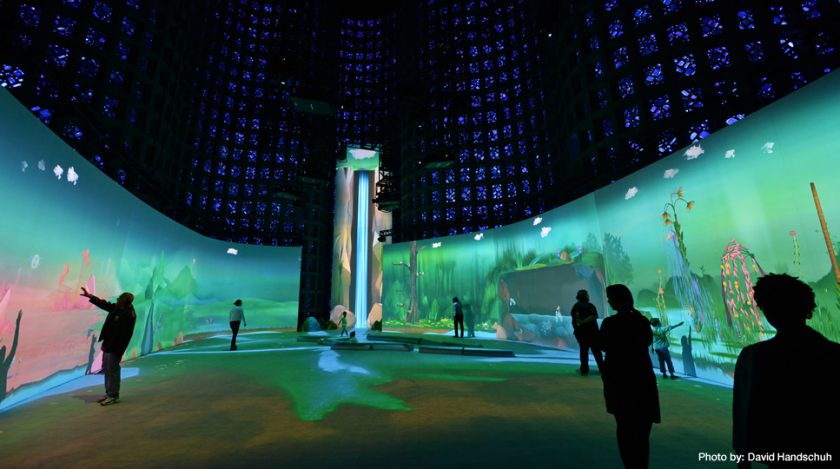A touchstone for myself would be the Connected Worlds exhibit at the Hall of Science. A giant immersive animation confronts the viewers, who are mostly children visiting the museum.
To make Connected Worlds, NYSCI used Design I/o, who make immersive installations as their main practice. In addition to Design I/O, other collaborators included Zach Gage, Josh Goodrich, Big Show Construction, Yale’s Cognitive science dept, Columbia University’s Center for International Earth Science Information network, and NYU’s games for learning institute.
The project contains six different ecosystems, each one using OSC to send and receive sounds. The installation uses Kinect cameras to capture passerby’s movements as well. From what I see, a lot of it was programmed in C++.
I think a lot of the project was inspired by Disney’s theme parks. I think the sort of visual language, whimsy, and layout reminds me of a theme park approach. I also think they took inspiration from the interactive spaces of Teamlab.
I can see this project inspiring further large scale installations. I also think that projects like DynamicLand, that projection mapping real world coding workshop, may benefit from considering how kids can engage with their environments and how code can react.
Link: http://www.design-io.com/projects/ConnectedWorlds/
Video:https://vimeo.com/131585517
Behind the scenes: https://vimeo.com/131665883



